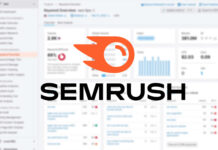Kroger, the largest supermarket chain in the United States, is currently under investigation for using electronic price labels in its stores nationwide. US Senators Elizabeth Warren and Bob Casey have announced they are investigating Kroger’s practices to determine whether the company is engaging in surge pricing. Dynamic pricing—also referred to as surge pricing, demand pricing, time-based pricing, and variable pricing—is a common practice in industries such as airlines, hotels, and ride-sharing services like Uber. This pricing model involves adjusting prices based on demand, resulting in customers paying more or less depending on the situation. However, this practice can be controversial, particularly when applied to essential items such as groceries.
Grocery Giant Kroger Accused Of Price Gouging
There are concerns that companies might exploit this system by compelling customers to pay higher prices during peak shopping periods. Kroger is not the sole major retailer utilizing electronic price labels. Walmart, the largest retailer in the United States, announced its plans to install digital shelf labels in thousands of stores this June. However, it is unclear whether Walmart will also be subjected to investigation. In a letter addressed to Kroger’s CEO Rodney McMullen, the senators expressed concerns that the technology could be exploited to overcharge customers and increase grocery prices during periods of high consumer demand.
Kroger’s Use of Electronic Shelf Labels
Kroger initiated testing of this new technology, dubbed “electronic shelving labels,” in 2018. The American retail company has subsequently expanded its use to 500 stores nationwide. As reported by the Cincinnati Enquirer, lawmakers have requested Kroger provide information regarding the technology’s usage and rationale. The letter read: “These digital price tags may enable Kroger and other grocery chains to transition to ‘dynamic pricing,’ in which the price of basic household goods could surge based on the time of day, the weather, or other transitory events – allowing stores to calibrate price increases to extract maximum profits at a time when the amount of Americans’ income spent on food is at a 30-year high.”
The letter warned that the widespread adoption of digital price tags could empower large grocery stores to exploit consumers by increasing profits. The lawmakers pointed out that analysts have suggested the widespread implementation of dynamic pricing could lead to groceries and other consumer goods being priced similarly to airline tickets. The senators argued that this could create a sense of urgency and limited availability, allowing sellers to maximize profits from each customer. Kroger, which operates 2,750 stores across 35 states, claims its strategy is focused on lowering prices to attract more customers.
Americans Facing Soaring Grocery Costs
“Any test of electronic shelf tags is to lower prices more for customers where it matters most. To suggest otherwise is not true,” a spokesperson told the Cincinnati Enquirer. While the effectiveness of the technology in lowering prices remains to be seen, a recent survey revealed that many Americans have resorted to skipping meals due to inflated grocery store prices. A study conducted by Qualtrics on behalf of Intuit Credit Karma reveals that 80 percent of Americans have experienced a significant increase in grocery costs over the past few years.
More than a quarter of respondents admitted to occasionally skipping meals due to these rising costs. At the same time, approximately one-third reported spending over 60 percent of their monthly income on essential expenses such as food, utilities, and rent. “Food insecurity is a major issue in this country as millions of Americans don’t have enough food to eat or don’t have access to healthy food,” Courtney Alev, a consumer financial advocate at Credit Karma, said in a statement. “Over these past few years, a rise in costs for food and household staples have put American households in precarious situations, especially low-earning households who have families to feed,” Alev continued.
Financial Impact of Rising Grocery Costs
“While we’re seeing early signs of inflation relief for food, Americans are still facing rising costs for other necessities such as rent and gasoline, which could be counteracting their journey toward financial stability,” she added. According to data from the Bureau of Labor Statistics, grocery prices have surged by 25 percent since the onset of the COVID-19 pandemic in early 2020. However, relief emerged in April as grocery costs declined for the first time in a year.
Notably, 44 percent of Americans feel financially unstable, especially those earning less than $50,000. Debt has increased by 55 percent, likely due to rising living costs. Groceries saw the steepest price hike (80 percent), followed by gas, utilities, housing, and dining out. To cope, 26 percent bought unhealthy food due to cost, while 21 percent felt ashamed about not affording groceries. While many Americans grapple with rising grocery costs, some, like social media influencer Ashley, are taking drastic measures like relying on children’s meals or accumulating debt.
Expert Analysis on Food Inflation
A stark contrast emerges. Fresh Del Monte Produce Inc. has introduced a rare pineapple priced at $395.99. The stark contrast between luxury goods and everyday essentials is further underscored by the reaction of economists to the current grocery price landscape. Even seasoned experts like Kenneth Rogoff, a Harvard University economics professor and former IMF chief economist, expressed shock at the cost of groceries while discussing the Federal Reserve’s inflation battle.
“I mean, I’m a professional. I understand the difference between the level of prices and inflation. It’s just something we haven’t seen in a long time,” he stressed. Rogoff added that “prices aren’t going to go down” and that, despite falling inflation, prices are still rising. “I think that’s very hard to digest,” he said. According to Wednesday’s CPI report, consumers continue to face rising costs for food and energy despite a three-year low in inflation reported in July.
According to Rogoff, the CPI news wasn’t a big surprise. Prices for things like food and gas are still going up. This is terrible news for people. Even though prices are rising slower now than before, it’s still tough for people to pay their bills.













